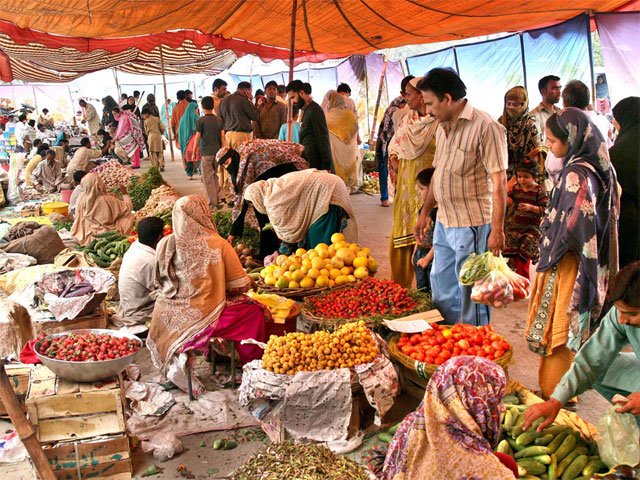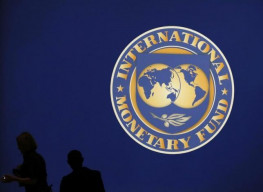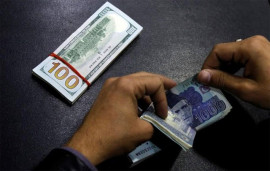
Measured by the Consumer Price Index, the headline inflation indicator slowed down for the third consecutive month to 3.2% in March, said Pakistan Bureau of Statistics Director Prices Ateequr Rehman on Monday.
Headline inflation remained low due to a high base impact and reduction in prices of the food group, said Rehman.
However, non-food non-energy inflation, known as core inflation, spiked to 5.8% in March - the highest level recorded in the past three years. In a single month, core inflation jumped by 0.7%, which highlights the build-up of inflationary pressures. But this trend is not consistent with the headline inflation rate.
Among 89 commodity groups of CPI, core inflation covers the price movement of 43 items. The State Bank of Pakistan (SBP) uses core inflation while formulating its monetary policy.
Inflation slows down, clocks-in at 3.8% in February
During the current fiscal year, the SBP has printed Rs1.247 trillion currency notes for budget financing. The central bank, on the advice of the finance ministry, has also devalued the rupee against the US dollar by 10% in the past three months alone. Additionally, the Federal Board of Revenue has imposed regulatory duties on hundreds of imported items. Petroleum prices have also been increased for past seven consecutive months. Yet the inflation index is not inching higher.
Last week, the SBP also decided to keep its key policy rate unchanged at 6% for the next two months, despite expectation of 25 basis point increase. In its handout, the central bank stated that "sticky core inflation along with a moderate outlook of food prices amid abundant grain stocks and the recent increase in policy rate are expected to contain average inflation well below the fiscal year 2017-18 target of 6% and close to it for FY19".
The SBP made the assessment after taking into account the lagged impact of exchange rate flexibility and its second round effects (specifically through adjustments in fuel prices), demand pressures, and volatile global oil prices.
Inflation reading clocks in at 4.4% in January
In March this year, kerosene prices were 30.6% higher than March 2017. Bus fares increased over 26%, petrol 20.6%, diesel over 20% and private school fees almost 20%. Government university fees also increased over 37% since March 2017. Suzuki's car is now 15.7% more expensive than a year ago and Toyota's vehicle rates have jumped over 11.2% since March last year. Mutton prices have also soared 11.3% in one year.
To a question, the PBS director prices said that there has been a significant change in spending patterns during the past 10 years but the government was still using the 2007-08 as base year to calculate increase in prices. Rehman said that from July, inflation numbers will be reported on a new base year and weights of the items in the inflation basket have been drastically changed.
The CPI index is calculated by checking the prices only in the urban centres. The director prices said that in the new base year, the government will also capture price trends in the rural areas. The new inflation basket will comprise of 600 items including 244 to be captured in the rural areas.
Due to reduction in pace of inflation for the third straight month, the average inflation rate during first nine months of the fiscal year, (July-March) remained at 3.78%, which was lower than the level observed during the same period of the last fiscal year.
During the past nine months, the prices of onions increased 90%, tomatoes 16%, rice 14.3%, kerosene oil 12.2%, education fee 12%, drugs and medicines 11.4%, motor fuel 10.4%, tea 9.4% and potatoes 9%.









































COMMENTS
Comments are moderated and generally will be posted if they are on-topic and not abusive.
For more information, please see our Comments FAQ